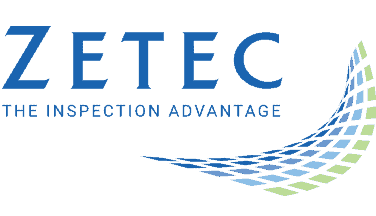NDT in the Oil & Gas Industry: An Overview

Nondestructive testing (NDT) plays a vital role in most industries. NDT in the oil and gas industry is critical for both the integrity of equipment and the safety of petroleum refining and extraction operations. Keeping potentially hazardous chemicals and fluids safely contained within pipes and pressure vessels means careful inspection of welds and metals for flaws and corrosion using ultrasonic and eddy current NDT testing solutions.
NDT plays a role in many parts of the oil and gas industry. Running a safe, efficient, and profitable petroleum extraction operation on land or offshore requires effective ultrasonic and eddy current oil and gas upstream solutions. Transferring the extracted crude oil and gasses to the refineries where it will be converted into usable products requires a complete suite of midstream NDT solutions to keep pipelines and transportation running smoothly. The vessels that contain the pressure and heat to “crack” petroleum into a range of useful fuels need downstream NDT solutions to ensure their incident-free operation.
Zetec has supported every part of the oil and gas industry with a suite of ultrasonic and eddy current NDT solutions. Zetec has crafted an array of resources and publications to better inform interested parties in the industry of the many benefits of NDT in oil and gas industry applications. A full list of these resources can be found below.
Understanding Nondestructive Testing
Nondestructive testing allows for an in-depth analysis of material without destroying or damaging it. Zetec provides equipment for two types of NDT—ultrasonic testing (UT) and eddy current testing (ECT). Ultrasonic testing uses high-frequency soundwaves to analyze the material consistency of welds, metals, and other petroleum equipment. With Eddy current NDT a magnetic field from a coil is induced into conductive material where anomalies in the material create changes to the “eddy currents” helping to identify discontinuities in the material. Both of these NDT techniques are an indispensable part of the daily operation of many industries including oil and gas.
Learn more about NDT by reading our in-depth Nondestructive Testing Overview
Ultrasonic testing is possibly the most widespread type of NDT. It can be used on materials ranging from metals to composites. It is also available in a variety of forms. Phased array ultrasonic testing (PAUT) generates soundwaves from multiple sources. While delayed time of flight diffraction uses sophisticated software, the time between propagating waves, and their relative strength create sophisticated models of a material’s interior volume.
Read more about Advanced Ultrasonic Testing Equipment and Software
Eddy current testing (ECT) is a highly proven type of NDT that can be used to detect minute flaws in materials. Paired with sophisticated software and sensitive probes, technicians can detect even slight inclusions and discontinuities in metals. However, eddy current testing relies on conductivity and is, as a result, limited to testing conductive materials.
Read more about Cutting-Edge Eddy Current Nondestructive Testing Solutions
Understanding NDT in the Oil and Gas Industry
NDT technologies are being improved upon all the time with innovations in instrumentation, probes, and software. Keeping abreast of these innovations can help oil and gas producers in all phases of the production cycle improve the accuracy and speed of their NDT inspection of welds, pipes, and pressure and storage vessels. Improving production efficiency while ensuring safety and reliability of their operations.
Read more about The Most Innovative NDT Techniques in Oil and Gas
Developments in technology are opening up new techniques for both ultrasonic and eddy current NDT in the oil and gas industry. New instruments and improvements to existing instruments are being developed. These innovative solutions allow more accurate inspection of critical oil and gas infrastructure with a greater probability of the detection of discontinuities in welds and materials.
Read more about Devices and Accessories to Improve Your Pipeline NDT Methods
Using NDT for the Inspections of Pipelines
Pipelines pose some of the longest and most time-consuming NDT in the oil and gas industry there is. Ultrasonic or eddy current inspection of a mile of pipe can take some time, and oil and gas pipelines quite literally stretch across continents. Improving pipeline weld inspection efficiency improves not only safety and reliability, but helps to cut operating costs.
Read more about Improving Pipeline Weld Inspection Efficiency With NDT Scanning Solutions
Ultrasonic NDT is one of the most well-developed, portable, and easy-to-use forms of NDT. In the oil and gas industry that means that UT is one of the best methods for field inspections such as those of midstream pipes and pipelines that connect petroleum extraction operations with petroleum refining operations. A range of UT inspection methods are available, and three of the most effective NDT solutions for pipeline inspection are available from Zetec.
Read more about 3 Effective NDT Ultrasonic Pipeline & Piping Inspection Methods
Often NDT in the oil and gas industry is contracted out to services that specialize in conducting ultrasonic or eddy current testing. Pipelines are one of the longest and largest types of infrastructure in the petrochemical industry and one of the areas where the industry is most reliant on subcontractors for NDT services. These inspection services should be routinely evaluated for their accuracy and cost-effectiveness.
Read more about Evaluating Pipeline Inspection Services in the Oil and Gas Industry
Using NDT to Mitigate Corrosion in the Oil and Gas Industry
Corrosion and erosion over time due to the abrasiveness of a product can thin the walls of pipes, pressure vessels, and dome ends used in the oil and gas industry. NDT is a noninvasive way to routinely inspect wall thickness of metal infrastructure. It provides a method for the routine inspection of thickness without taking that infrastructure out of service.
Read more about Top Techniques for Ultrasound Thickness Measurement
Hydrogen can embrittle steels and stainless steels by reacting with the iron in these materials. Hydrocarbons like oil and natural gas are rich in hydrogen that can cause cracking in the steels that make up most oil and gas infrastructure. This problem is more acute under the high temperatures and pressures that much of this infrastructure operates under.
Read more about Detecting HTHA Cracking Early Using Ultrasonic Technology
Detecting corrosion in oil and gas infrastructure early is critical to maintaining that infrastructure’s long-term viability. NDT in the oil and gas industry provides a method that can be used much more easily than traditional methods of draining pipes and tanks and conducting a visual inspection of the interior with cameras.
Read more about NDT for Corrosion Detection: What You Need to Know
Oil and gas contain carbon, hydrogen, and sulfides that can corrode steel unpredictably, and with unexpected speed. Oil and gas NDT provides a method for inspecting these materials and detecting corrosion early before it creates a larger-scale issue. Effective corrosion mapping tests can be a challenge to set up, but Zetec provides effective corrosion mapping solutions that rise to the challenge.
Read more about Overcoming Corrosion Mapping Test Challenges with Advanced NDT Equipment and Software
NDT in the oil and gas industry is a must. Given the intense international scrutiny oil and gas extraction, transportation, and refining operations operate under, everything possible must be done to ensure the long-term safety and reliability of petroleum infrastructure. Ultrasonic and eddy current testing offer two of the safest, most efficient, and most effective solutions for maintaining infrastructure integrity.
Zetec has provided a wide range of effective solutions for NDT in the oil and gas industry for decades, contact us today to learn more about Zetec NDT.
